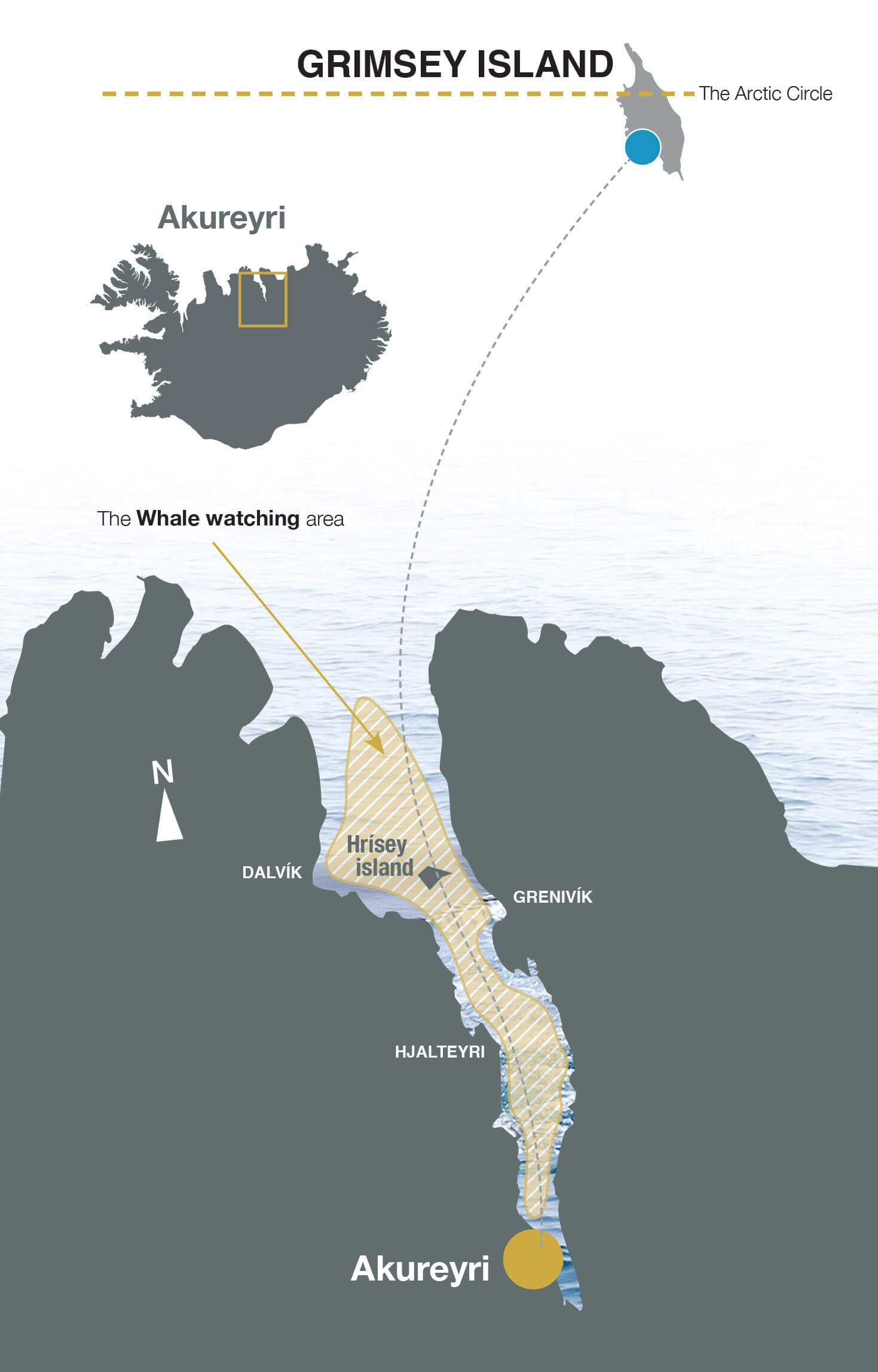Akureyri Fjord
Dramatic landscape and rich wildlife
The fjord
At the edge of the Arctic Circle, the fjord of Eyjafjörður is an area of outstanding natural beauty.
The fjord lies on the migratory routes of whales and countless bird species, making it the perfect place to observe wild animals in their natural habitat. Dramatic landscapes, rich history, and the wealth of species that choose to make it their home, should place the fjord on the bucket list of anyone interested in the natural world.
Seasonal changes greatly affect the wildlife population of the fjord, which means that there is no “typical” whale watching tour. Just like in Faxaflói Bay every tour is simply a unique experience.
Calm waters, perfect for whale watching
The longest fjord in North Iceland, Eyjafjörður stretches some 60 km into the land. Usually 6–10 km wide, it shelters a diverse range of wildlife. The waters are calm, making it perfect for whale watching, especially as the whales like to come for a fish feast, which usually lasts the whole summer long, and into the autumn months.
The name of the fjord, Eyjafjörður, means Fjord of Islands. It draws its name from the islands of Hrísey (Shrub Island), in the middle of the fjord, and Grímsey (Grímur’s Island, named after a settler), outside the fjord. It is embraced by high mountains on both sides – a little higher on the west side – and the highest of them have snow capped peaks for most of the summer. The mountains provide shelter for the fjord, making the waters calm and exceptionally suitable for marine tourism.
Many rivers to cross
A number of rivers flow into the fjord: Eyjafjarðará, at the very end of the fjord; Hörgá, on the west side, about 6 km north of the town of Akureyri; Svarfaðardalsá, which reaches the sea close to the town of Dalvík; and Fnjóská (yes, we can hardly pronounce it ourselves!), just east of the main whale watching grounds. The water from the rivers flows out of the fjord on the east side. We try to use this natural current, thus sailing out of the fjord on the east side and back in on the west side.
Treasures of nature
Some unique phenomena can be found on the seafloor of the fjord, protected as national treasures of nature. A group of geothermal cones rise some 50 metres (150 ft) from the seafloor up to a depth of 18 metres. The geothermal water temperature is 78°C (172°F), and although the minerals in the water have built these cones over thousands of years, the water streaming from them is fresh and suitable for drinking. This is the only place in the world where geothermal cones like these can be found in such shallow waters, and within reach of scuba divers.
Around 21,500 people live in the fjord, most of them based in Akureyri. Fisheries, agriculture, trade and tourism are the main sources of income. Other smaller communities include Ólafsfjörður, Dalvík, Hrísey, Árskógssandur, Hauganes, Hjalteyri, Svalbarðseyri, Grenivík and Grímsey.

HJALTEYRI
Hjalteyri is a small village, known for its herring factory, which was the largest in Europe when it was built in 1937, now housing various artists and activities.
THE FJORD
The fjord, 60 km long and 6-10 km wide, is called Eyjafjörður in Icelandic. It is home to diverse wildlife. The mountains on both sides provide shelter from the wind, making it ideal for whale watching.
HRÍSEY
Hrísey is a peaceful island in the middle of the fjord, home to 200 souls. The second largest island off Iceland.




